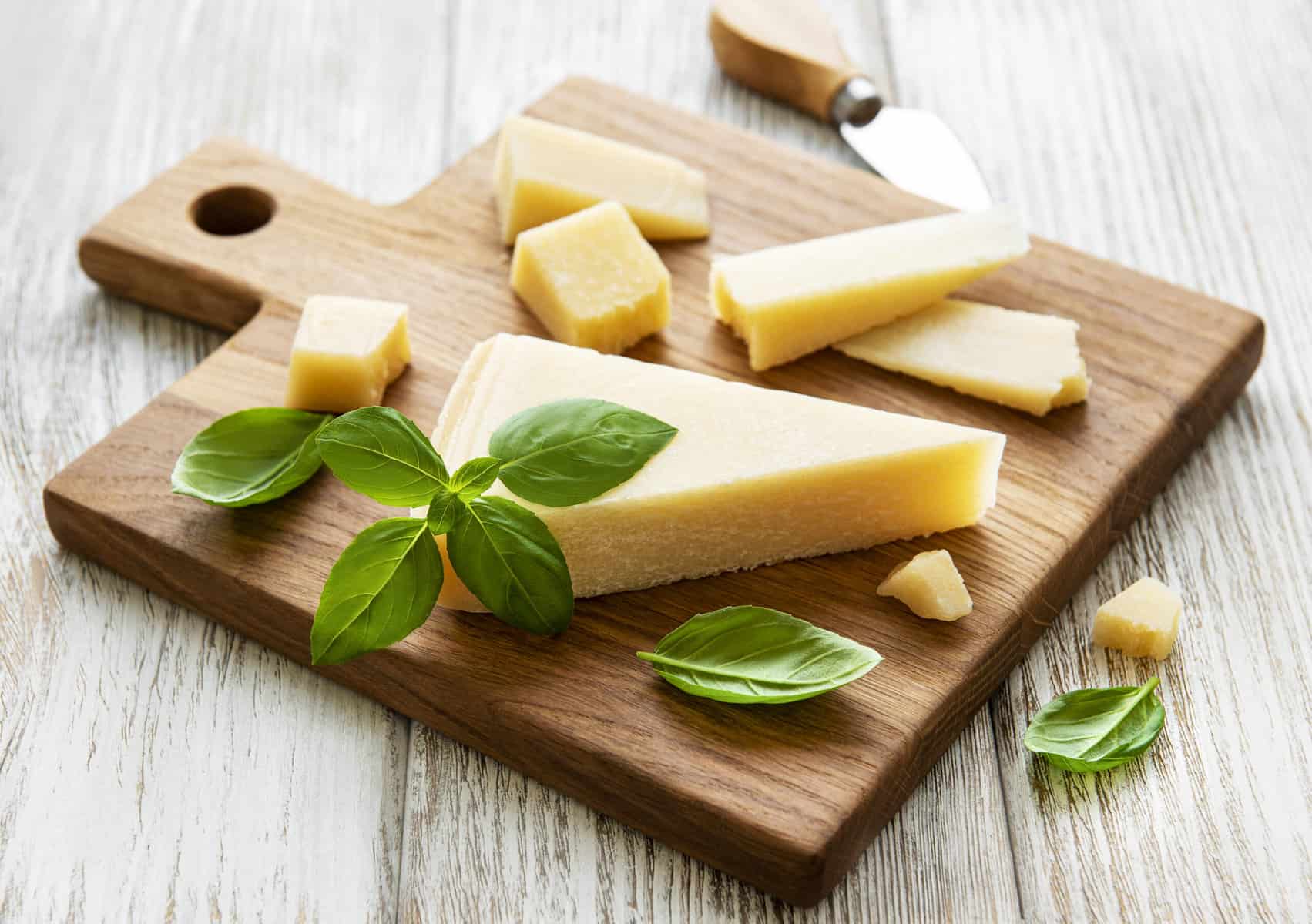Ever found yourself reaching for Parmesan at the store, only to hesitate and wonder if Asiago might be a better choice? Both are popular Italian cheeses, grated generously over pasta dishes and salads. But while they may look similar at first glance, Asiago cheese and Parmesan offer distinct flavors and textures that can elevate your culinary creations in different ways.
Let’s delve into the world of Asiago Cheese vs Parmesan to help you pick the perfect cheese for your next meal.

Unveiling the Flavors: A Tale of Two Cheeses
Asiago Cheese: This delightful cheese hails from the Asiago plateau in northeastern Italy. Its defining characteristic is a buttery, creamy, and nutty taste. Younger Asiago boasts a smooth texture, while aged varieties like Stravecchio develop a firmer texture and a more pronounced bitterness.
Parmesan Cheese: Also known as Parmigiano-Reggiano, this cheese hails from specific regions of Italy. It’s known for its sharp and robust flavor, with fruity and savory notes and a distinct earthiness. Parmesan boasts a longer aging process compared to Asiago, resulting in a more intense and complex flavor profile.
From Production to Plate: A Look Inside

Asiago Cheese: Made from cow’s milk, Asiago undergoes an aging process that can range from a few months to several years. The younger the cheese, the milder the flavor.
Parmesan Cheese: Produced with strict regulations, Parmesan uses cow’s milk and adheres to a longer aging process, with a minimum of 12 months and some varieties aged up to 36 months. This aging process contributes to Parmesan’s rich and complex taste.
Nutritional Benefits: A cheesy bonus!
Both Asiago and Parmesan offer a good source of protein and calcium, essential for building and maintaining strong bones and muscles. Additionally, Parmesan is a great choice for those with lactose intolerance as it contains minimal lactose. However, it’s important to remember that both cheeses are on the higher side in sodium content, so enjoy them in moderation.
The Great Asiago vs. Parmesan Debate: When to Use Which?
The answer depends on your taste preference and the dish you’re preparing.
Asiago’s Versatility:
- Salads and Sandwiches: Asiago’s creamy texture and nutty flavor add a delightful touch to salads and sandwiches.
- Pasta Perfection: Grate Asiago over pasta dishes for a richer and smoother taste compared to Parmesan.
- Cheese Board Star: Asiago’s unique flavor makes it a standout on cheese boards, complementing fruits, crackers, and cured meats.
Parmesan’s Boldness:
- Pasta Powerhouse: Parmesan is the king of grated cheeses for pasta dishes. Its sharp flavor adds a powerful punch.
- Soup Savory: A sprinkle of Parmesan over tomato or potato soup adds a delightful cheesy touch.
- Risotto Richness: Parmesan’s robust flavor beautifully complements creamy risotto dishes.
The Final Rind: Choosing Your Champion
There’s no single winner! Both Asiago and Parmesan bring unique qualities to the table. Consider these factors when making your choice:
- Flavor Profile: Do you prefer Asiago’s milder and nuttier notes or Parmesan’s sharp and robust character?
- Texture: Asiago offers a smoother texture, while Parmesan is known for its grainy texture.
- The Dish: Match the cheese to your recipe. Parmesan shines in bolder dishes, while Asiago complements lighter fare.
Fun with Cheese: Recipe Inspiration
Embrace the cheesy goodness!
- Creamy Asiago and Parmesan Sauce: Combine the best of both worlds for a delicious pasta sauce.
- Roasted Vegetables with Parmesan: A simple sprinkle of Parmesan adds a savory twist to roasted vegetables.
- Asiago and Pear Salad: This unexpected combination offers a delightful burst of flavors.
No matter which cheese you choose, Asiago and Parmesan will surely add a delectable touch to your culinary creations. So, experiment, explore, and enjoy the delicious world of cheese!
References:
FAQ About Cheese Choice: Asiago Cheese Vs Parmesan
Q: What is the difference between Asiago Cheese and Parmesan?
A: Asiago cheese is a cow’s milk cheese from Italy with a sweet and nutty flavor, while Parmesan is a hard, aged cow’s milk cheese with a sharp and salty taste.
Q: Can Asiago cheese be used as a substitute for Parmesan?
A: Yes, Asiago cheese can be used as a substitute for Parmesan in most dishes, but keep in mind that Asiago has a milder flavor than Parmesan.
Q: Which cheese is better for grating over pasta dishes?
A: Parmesan is the more commonly used cheese for grating over pasta dishes due to its distinct sharp flavor. Asiago can also be grated but will contribute a different taste profile.
Q: Are there any differences in the texture of Asiago Cheese and Parmesan?
A: Yes, Asiago cheese tends to have a smoother and creamier texture compared to the granular texture of Parmesan, which is a result of the aging process.
Q: Can both Asiago Cheese and Parmesan be used interchangeably in recipes?
A: While both cheeses can be used interchangeably in many recipes, the choice between Asiago and Parmesan ultimately depends on the dish’s desired flavor profile and texture.

The Finer Diner has a rich history deeply rooted in the Mt. Oliver and Hilltop community. Our journey began with a simple yet ambitious vision – to create a welcoming space where friends and families could come together to enjoy delicious, comforting meals in a classic diner-style setting. Since our establishment, we have been dedicated to serving food, creating lasting memories, and fostering a sense of belonging within our community. Our commitment to quality, authenticity, and exceptional service has been the cornerstone of our success.